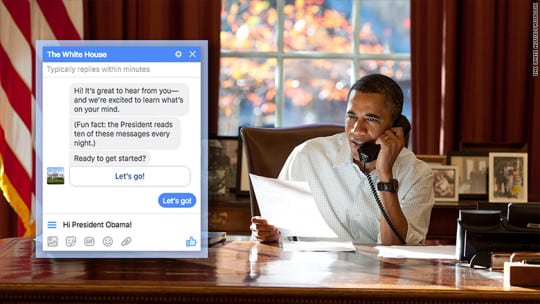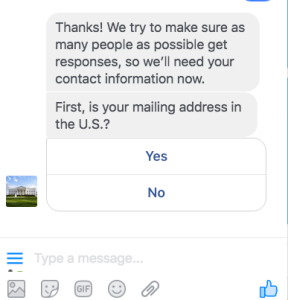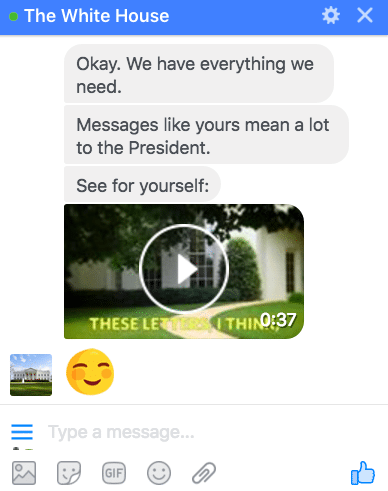
Since taking office in 2009, President Obama has included ten personal letters from the public in his daily briefs. This week, the White House announced a new direct line to the president: a Facebook messenger account, from which some of these personal letters will be selected. The automated account, answered by a bot, is the first government account to make use of the service, and spotlights a powerful new tool for communicators to listen to their audiences, collect information, and project a receptive and modern personality for their brands.

When a user messages the White House's messenger account, they receive a cheerful auto-reply welcoming feedback and reminding them of the president's commitment to personally reading ten letters a day. Next, the bot checks that the message is correct, asking users to read over the message and spell-check any typos. Once the message has been confirmed by the user, the bot asks for the address, email and phone number of the respondent. Finally, the bot signs off with a "thank you," a short video of the president affirming the importance of letter writers' feedback as "more important to understanding what's going on than anything else," and a smiling emoji.

Brands should take note of the multiple benefits the White House has gained with the launch of its Messenger bot. First, the White House is continuing to project the message that the president is up with the times and well-attuned to his audience, meeting them on the social media channels where they spend most of their time. (It should be noted that Michelle Obama, on a similar note, has launched a Snapchat account). Second, the president's administration has an efficient new way to record and listen to audience feedback as well as capturing contact information. Finally, the Messenger bot creates a funnel for rewarding engaged users with exclusive content, like a short video of the president (not published elsewhere on White House accounts).
Though building a bot with the ability to continue a conversation past a couple of auto-replies might sound daunting, communicators may be surprised to learn that they won't require a large tech budget to get started. Facebook now provides a detailed guide for Messenger bot setup. While setup requires some familiarity with basic coding, the more tech-savvy members of your team should be able to get over the learning curve without much difficulty. Facebook's guide to the platform (which is still in beta) can be supplemented by easy-to-find guides on Github, a popular code-sharing website.
Follow Sophie: SophieMaerowitz
